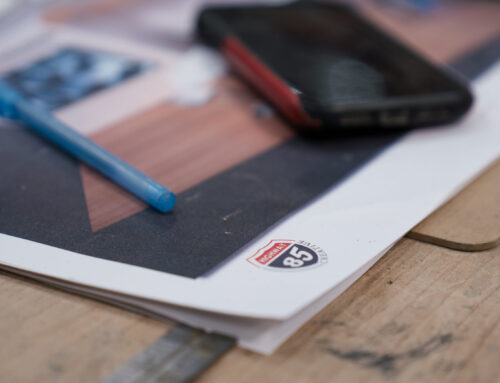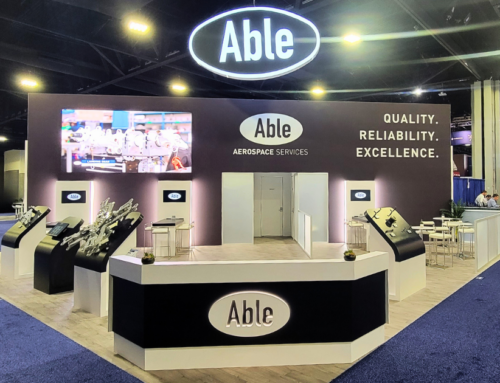There are many effective ways to exhibit at a trade show, but there are just as many ineffective ways that can have little effect on the bottom line. Anyone who has ever been to a trade show has probably seen this first hand: half of the booths at the trade show are booming with excitement, while the other half are filled with mostly bored employees, looking enviously at their competition’s booths.
The difference between these two groups is simple: their planning and strategizing before going to the trade show. Here are seven steps to help with your trade show marketing ideas and that will help you form an effective trade show marketing plan.
1. Determine Your Goals Ahead of Time
There are a couple of questions that should be answered upon deciding to attend a trade show:
What is the purpose for attending the trade show? What does a company wish to accomplish while at the trade show?
Some companies attend trade shows to spread basic awareness about their company or to present their new services or products to the public. However, some companies have more specific objectives for joining trade shows, like generating new opportunities and leads for future projects. They also attend to network in a more target-rich environment. Finally, there are some companies that have a combination of objectives they wish to complete at trade shows.
The point of this tip is to express the importance of determining what your objectives are well in advance of the trade show. This helps them to better proceed and to focus on things that need to happen to fulfil the purpose.
2. Develop a Clear Strategy
Many companies register for trade shows far in advance, which is not a bad strategy, but due to the time between when they register and the actual trade show companies often forget about having registered. On the other hand, there are also a lot of companies that wait until the last minute to participate in trade shows, which poses all new issues. Planning for a trade show is very strategic. It takes more than just booking hotels and flights for the trade show. Each of the three trade show stages (pre-show, during-show and post-show) should all be thought through with care in order for the experience not to be a waste.
3. Make Sure Your Booth is Inviting
Location is key in a trade show. It is important to know the layout of the trade show and where your booth will be located. This helps with planning the layout of a successful booth. Companies can see the best way to set up their displays so that they are open and inviting to the public and so that it will be seen by the most traffic possible.
Further, booths should always be welcoming. Placing a table across the front of a booth can be uninviting to traffic passing by. Instead, companies should design the booth to be more open so that visitors can enter into the booth without the illusion of being trapped. It will help to increase the likelihood that traffic will choose to step into a booth to see what the fuss is all about.
4. Have an Engagement Plan
The display of the booth could be perfect, but if the people running the booth do not look pleased or energetic, people will steer away from it. They want to engage with energetic people that seem to love what they do and are there willingly. Working a booth should be the employees’ first priority, but engaging in conversations with those visiting the booth is an excellent way to get them to stay.
And there are a lot of creative methods, like promotions and giveaways, that can create a positive buzz about a booth throughout the trade show. They can be used to draw people in, and they can oftentimes capture visitors’ contact information that lead to legitimate leads for future business contacts.
5. Align Your Booth and Messaging
Companies have a brief window to catch the eye of those that pass by their booth. This is where it is important that the booth makes an impact, and that includes the message and giveaways that the booth portrays. Those who pass by a booth should instantly be able to see who the booth belongs to and what their business actually does.
In swag bags or giveaway items, it is important to make a statement and branch away from the norm. It is fine to give away things like pens with the company logo on them, but there should be other items that stand out and that are consistent with the company’s marketing materials, services, and products.
6. Have A Follow-Up Strategy
There’s more to attending trade shows than preparing and executing. After a trade show is over, it is imperative that companies have a strategy and continue their work to follow up on leads generated from the trade show. A lot of the business and contact takes place after the trade show is done. Therefore, it is important to have a strategy set in place for what employees should do to turn their trade show contacts into actual business contacts.
7. Consider Adding A Speaker
A booth at a trade show is always helpful, but to have a platform speaker provides a lot of extra benefits. It shows the expertise of a company and shows that experience off to the trade show audience. Plus, having a speaker helps to promote a company’s voice and creates buzz across the trade show. Trade shows have different processes for choosing speakers. Therefore, it is crucial that a company look into the process of the trade show they are planning on attending early, and they should submit a proposal for their speech in advance of the trade show date.
Companies of All Sizes Can Succeed
It doesn’t take having the largest booth at the trade show to be successful. Companies of all financial budgets can be successful if they plan properly before a trade show and follow that plan. Strategy is always key, and companies should be sure to execute their best strategy before and during the trade show and follow through with it via post-event activities.





[…] to the location requirements, displays, and type of booths needed. Only after you’ve clearly defined your objective and strategy should you begin to search for the right […]
[…] want to establish the goals of the show and how you’ll measure the overall success. Developing a trade show marketing plan can help you with […]